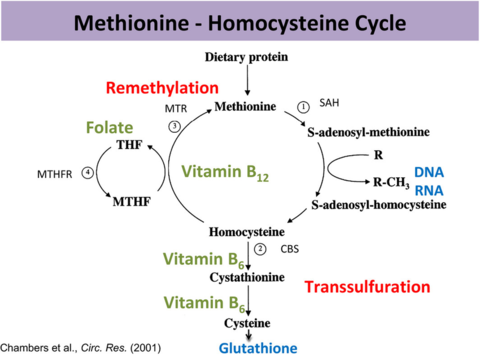Scientific evidence suggests that methionine supplementation can increase mitochondrial ROS (reactive oxygen species) production and mitochondrial DNA oxidative damage. However, it's important to note that supplementation typically provides much higher levels of methionine than what we naturally consume through food. Methionine is still an essential amino acid, meaning it must be obtained from the diet, and it cannot be entirely eliminated.
Interestingly, methionine has a pro-oxidative effect when taken in large amounts, but when metabolized into S-adenosylmethionine (SAM-e) or N-acetylcysteine (NAC), the resulting compounds show antioxidant properties. This raises the question: Why does methionine act as a pro-oxidative substance, while its derivatives (SAM-e and NAC) act as antioxidants?
To address this question, it’s crucial to distinguish between methionine, its derivatives, and how they interact with the body in different contexts.
1. Methionine and its Role in Oxidative Stress
Methionine is an essential amino acid, meaning it must be obtained from the diet, and it plays key roles in various biological functions, such as protein synthesis and as a precursor for other important molecules. However, when excessive methionine is consumed (for example, through supplementation), it can increase mitochondrial ROS production. This is because methionine metabolism, especially when in excess, generates metabolites that promote oxidative stress:
Methionine metabolism produces homocysteine, a metabolite that can contribute to oxidative damage.
Elevated homocysteine levels can lead to increased oxidative stress, both in the mitochondria and throughout the body. This damage includes oxidative damage to mitochondrial DNA (mtDNA), proteins, and lipids, which can impair mitochondrial function and contribute to various diseases, including liver toxicity.
However, methionine’s potential to induce oxidative stress is usually tied to excessive amounts or an imbalance in the metabolic pathways that process it.
2. SAMe (S-adenosylmethionine) and NAC (N-acetylcysteine): Antioxidant Properties
Despite methionine being associated with oxidative stress in high amounts, SAMe and NAC are considered antioxidants for a few reasons:
SAMe (S-adenosylmethionine): SAMe is derived from methionine and is involved in methylation reactions, where it donates a methyl group to other molecules. This process is crucial for regulating gene expression, neurotransmitter synthesis, and overall cellular health. SAMe itself has been shown to have anti-inflammatory and antioxidant properties because it supports the production of key molecules that protect against oxidative damage. By participating in methylation and improving the function of various cellular processes, SAMe helps to balance out the oxidative stress that might arise from excessive methionine.
NAC (N-acetylcysteine): NAC is a derivative of the amino acid cysteine, which is synthesized from methionine. NAC is a precursor to glutathione, one of the body's most important antioxidants. Glutathione helps neutralize free radicals and ROS in cells, including mitochondria. Supplementing with NAC can increase the body's stores of glutathione, thereby enhancing the body's ability to manage oxidative stress.By increasing glutathione levels, NAC directly combats oxidative damage, protecting cells from the potential harmful effects of ROS.

3. The Shift from "Good" to "Bad" and Back Again
So, why can methionine be pro-oxidative at times, but its derivatives (like SAMe and NAC) be anti-oxidative?
The key difference is in the context and balance of how these substances are metabolized and utilized by the body:
Methionine can be pro-oxidative when there is too much in the system, especially when the metabolic pathways (such as those leading to homocysteine production) become disrupted or imbalanced.
SAMe and NAC are derived from methionine but act in protective ways by supporting detoxification, methylation, and the production of antioxidants like glutathione, which neutralize oxidative stress.
Essentially, the amount, metabolic context, and balance of these substances make all the difference. When in excess or when certain metabolic pathways are overburdened, methionine can be pro-oxidative. However, in balanced amounts or when its derivatives are used correctly (such as SAMe or NAC), it supports healthy cellular function and antioxidant protection.
4. Good to Bad and Back Again
The process through which "good" substances become "bad" often occurs when there is imbalance, excess, or dysfunction in the body's metabolism. For example:
Excess methionine can overwhelm certain metabolic pathways, leading to harmful effects like increased ROS production, mitochondrial damage, and toxicity.
However, in moderate amounts, methionine is a necessary building block for SAMe, which supports cellular functions and acts as an antioxidant. Similarly, NAC, by promoting glutathione production, helps the body combat oxidative stress.
In summary, methionine, in excess, has the potential to become pro-oxidative, contributing to cellular damage and oxidative stress. On the other hand, SAMe and NAC, which are derivatives of methionine, act as antioxidants by supporting detoxification processes, promoting methylation, and enhancing the body's antioxidant defense systems. The key lies in maintaining balance and ensuring the proper metabolic conversion and utilization of these substances. Too much of any one thing can upset this balance and turn a beneficial substance into something harmful.